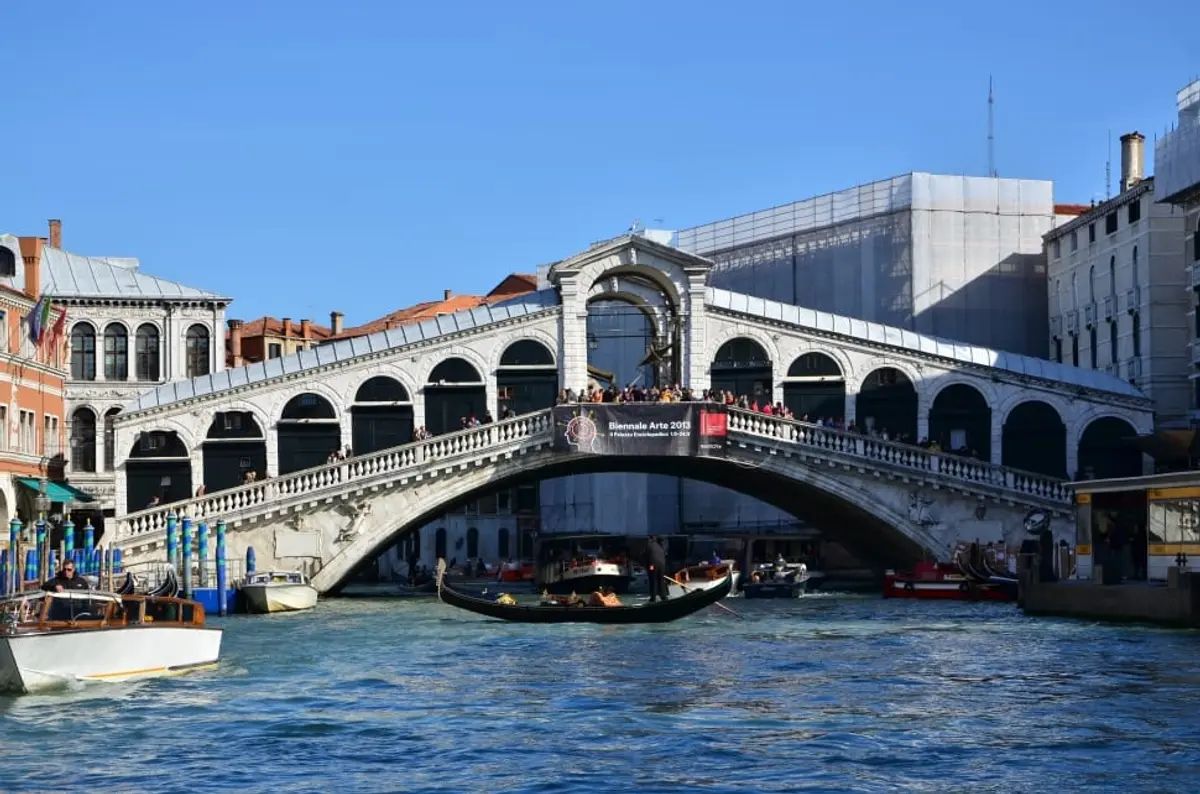The city of Venice is trying to control surging tourist numbers in the lagoon city by introducing further restrictions including limiting walking groups to 25 people.
The planned new regulations are due to come into effect in the historic centre as well as the islands of Murano, Burano and Torcello next June according to a statement on the city of Venice’s website (the proposed legislation will need to be passed by the city council). “The use of loudspeakers that may cause confusion and disturbance will also be prohibited,” the statement adds.
“[The provisions are] part of a broader framework of interventions aimed at improving and managing better tourism in Venice, thus guaranteeing a greater balance between the needs of those who live in the city, either as residents or as workers, and those who visit the city,” says the city’s tourism councillor, Simone Venturini.
“The administration not only wants to give precise rules for respecting the fragility of Venice—[relating to] the traffic and coexisting with those who live in Venice—but also give a signal regarding the presence of unauthorised tourist guides," adds the councillor for commerce, Sebastiano Costalonga.
Earlier this year the Venetian authorities announced plans to charge daytrippers a €5 admission fee to the city in a bid to stem rampant over-tourism. Ticket holders will need to download a QR code on their phone which may be checked by inspectors.
Those exempt from paying the fee include children aged under 14, tourists staying overnight in hotels and Airbnb properties along with “residents in the municipality of Venice [and] students of any schools and universities located in the old city or in the smaller islands”, says a local authority statement. The city’s permanent citizens amount to around 49,000 people. But some Venice specialists oppose the plan including Anna Somers Cocks, The Art Newspaper's founding editor, who believes the entrance fee should be higher.
The city took a big financial hit during the Covid-19 pandemic with 71.5% fewer tourists arriving in 2020 compared to the previous year, when an estimated 19 million visitors poured in. But as numbers climb dramatically again, locals are pushing for a more sustainable form of tourism.
In 2021, the Italian government approved a ban on large cruise ships entering the historic centre of Venice, though this decree was treated with scepticism by some Venice experts. On 14 September, the Unesco World Heritage Committee, the governing body of the World Heritage Convention, meeting in Riyadh, Saudi Arabia, voted against the recommendation of the World Heritage Centre (WHC), the Convention’s permanent secretariat, that Venice be added to its list of endangered sites.


